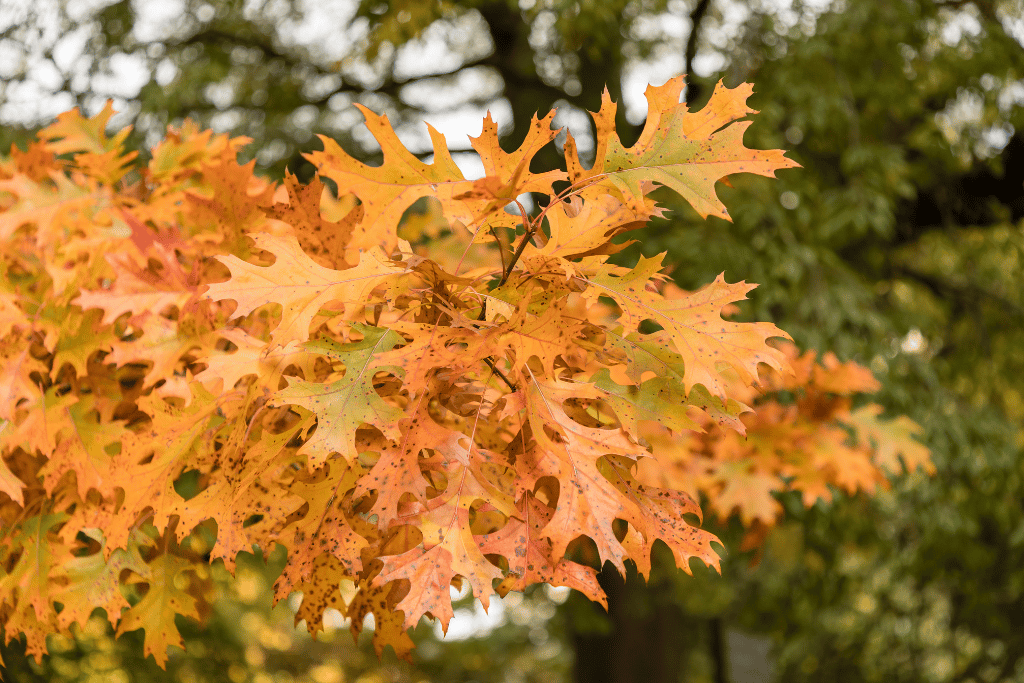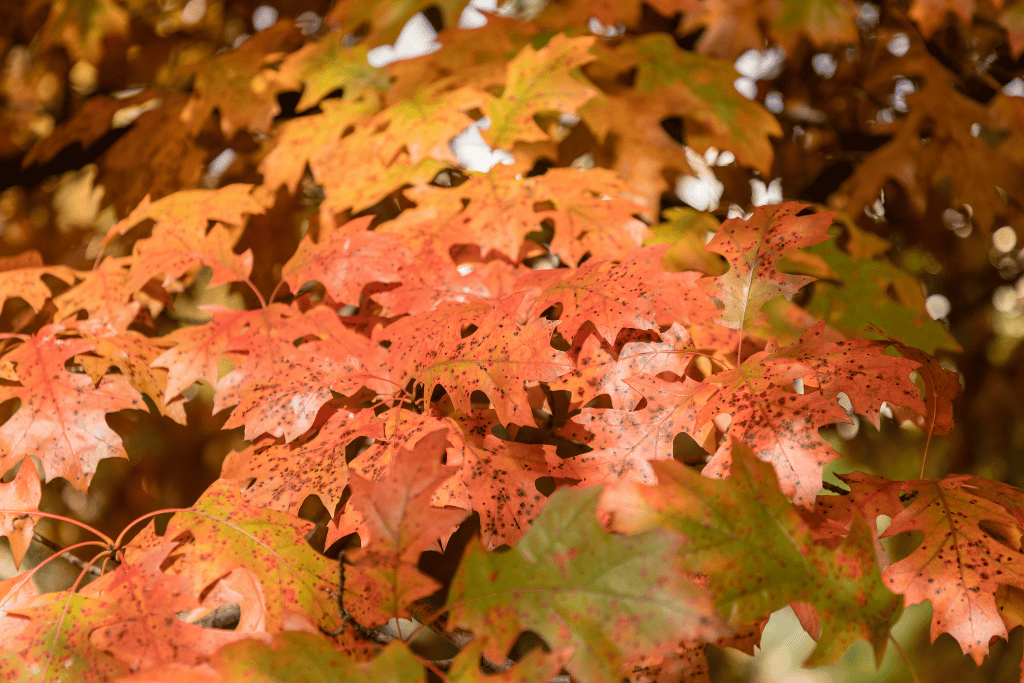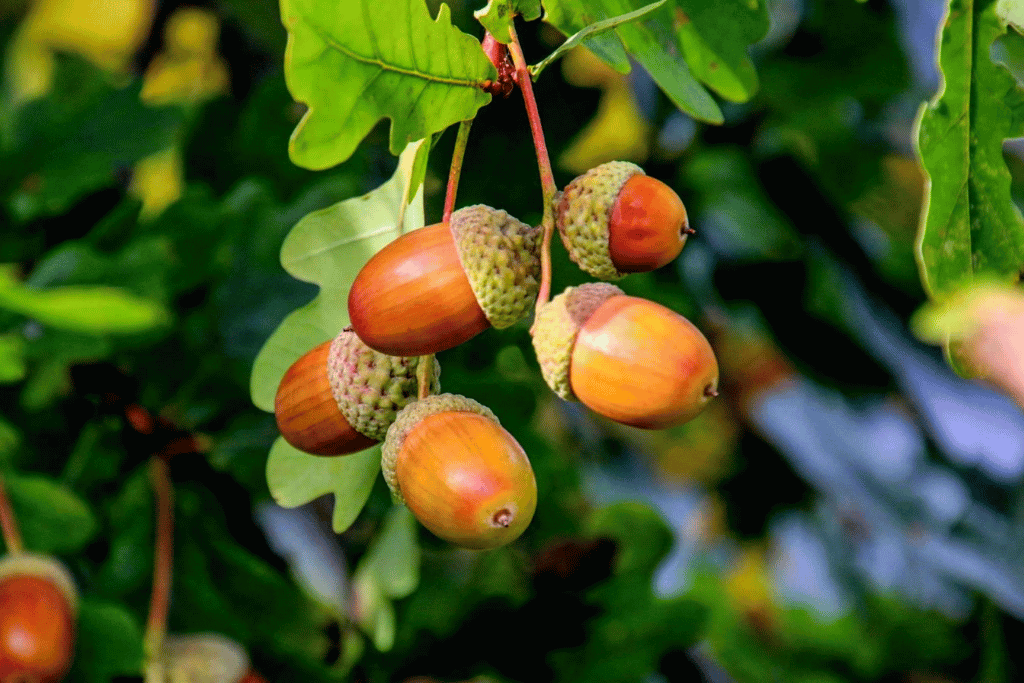
Shumard Oak – A tree that embodies strength, beauty, and grace, much like a gentle giant standing tall in your garden. This majestic tree is a popular choice for many gardeners, but is it the right choice for you? Before you get swept away by its grandeur, let’s take a closer look at the Shumard oak pros and cons.
This magnificent tree is known for its brilliant fall color, deep-rooted strength, and its ability to adapt to a variety of soils and climates. But, as with any tree, there are also some drawbacks that come with planting a Shumard oak.
So, are you ready to find out if this is the right tree for your garden? Let’s find out:
An Overview of Shumard Oak Tree

The Shumard Oak Tree (Quercus shumardii) is a native to the southern United States and can be found growing in Texas, Oklahoma, Arkansas, Louisiana, Mississippi, Georgia and Alabama. It is an impressive tree that can reach heights of up to 80 feet tall with a spread of 70 feet wide when mature.
The evergreen Shumard Oak leaves boast a deep, glossy green color and an oblong shape. When autumn arrives, these foliage change to a stunning orange-red hue that’s truly breathtaking. Its bark is equally intriguing – with its rugged texture and deep ridges resembling the skin of an elephant!
For any landscape, the Shumard Oak stands out as a magnificent choice due to its flexibility and resilience. It can grow in various soil types – from clayey to loamy ones – while being tolerant of low levels of water once matured. Also boasting good disease resistance and fast growth rate with minimal upkeep, this tree is an excellent addition for your outdoor space!
The Shumard Oak is ideal for timber production due to its strong wood, and it’s regularly used in the construction of furniture, floors, and fencing. Additionally, acorns produced by this tree provide a natural food source for animals like deer and turkey.
If you’re considering planting a Shumard Oak in your garden, there are some pros and cons to consider first.
Shumard Oak Pros and Cons
Like any other tree, this one also has its advantages and disadvantages. However, the pros far outweigh the cons.
Advantages of Shumard Oak Trees
1. Grandiose growth:
The Shumard Oak is an awe-inspiring sight, growing up to eighty feet tall and spreading out fifty to sixty feet wide. It’s sure to impress your neighbors with its majestic beauty towering over their gardens!
2. Grows easily:
The Shumard Oak is a champion of versatility—it easily adjusts to practically any soil type and climatic conditions, making it an ideal tree for landscapes big or small. Whether you’re in the midst of a swampy bog or desert oasis, this stout oak will find its place among your plants and thrive!
3. Foliage frenzy:
The Shumard Oak is known for its vibrant, bright green leaves that turn a beautiful shade of red, orange, and yellow in the fall, making it the life of any autumn party. The leaves will fall, but the memories of their vibrant colors will last forever.
4. Strong and steady:
The hardy Shumard Oak is more than capable of withstanding extreme weather conditions and minor accidents like lawnmower bumping, guaranteeing its longevity in your garden. Forget about knights in shining armor – the hero you need for long-term protection and stability? A trusty Shumard Oak!
5. Wildlife welcome:
The Shumard Oak is a popular spot for birds, squirrels, and other wildlife, making it a great addition to any wildlife garden. You’ll have a front row seat to all the wildlife action, without ever leaving your own yard!
6. Nut-ritionally delicious:
The Shumard Oak produces large acorns that serve as a food source for wildlife and can also be used to make delicious acorn flour. Now you can add a nutty twist to your baking and help out some wildlife while you’re at it.

7. Temperature tolerant:
A tree that can withstand any temperature! These trees are incredibly resilient and adaptable to extremes of heat or cold. They make the perfect addition to outdoor spaces which experience drastic changes in weather conditions throughout the year.
8. Longer lifespan:
Investing in one of these trees is guaranteed to be a rewarding decision, as they have been known to live up to 150 years! That’s many decades full of beauty and tranquility that your family can enjoy.
9. Urban pollution tolerant:
The Shumard oak tree is a perfect choice for adding beauty to your urban garden – with its ability to tolerate high levels of air and water pollution, these trees are ideal for city gardens. If you’re looking to bring some life into your garden in an urban area, the resilient Shumard oak makes a great option!
10.Shade provider:
If you’re looking for a solution to create shade in your sunny garden, look no further than the Shumard oak. This tree offers dense foliage that can provide protection from intense sunlight, making it an ideal option if you have multiple plants requiring some extra protection from UV rays. Planting one or more of these trees near other sensitive creatures will grant them ample relief and allow them to flourish.
11. Low maintenance:
With the Shumard oak tree, you will have to spend minimal time and effort on tending or pruning your trees in order to keep them healthy. This allows more of your moments spent outdoors to be filled with appreciation for its beauty rather than maintenance activities.
12. Oak-tastic:
Last but not least, the Shumard Oak is simply oak-tastic! It’s a tree that has it all, beauty, versatility, strength, and a great personality. So why not add one to your landscape today and start making memories that will last a lifetime!
Disadvantages of Shumard Oak Trees
1. They need a lot of sun:
The Shumard Oak needs direct sunlight for at least 6 to 8 hours a day to ensure proper growth and health. This can be difficult if you are in an urban area with a lot of shade or if your yard is surrounded by trees. Moreover, rain can make it difficult for the tree to get enough sun, as the leaves will be wet and can block out some of the light.
2. Oak leaf blisters:
If you have a Shumard Oak, be aware of the potential for oak leaf blister – an unsightly fungal infection that can cause leaves to become deformed, discolored and drop prematurely. This could lead to stunted growth as well as weakened immunity for your tree. Since this condition is hard to treat effectively, it’s important that any sign of infection is detected early on so swift action can be taken before further damage occurs!
Comparing Shumard Oak to Other Oak Species
Nuttal oak vs shumard oak:
Nuttal oak and Shumard oak are two popular types of oak trees. Both share similar characteristics, as they belong to the same species (Quercus). However, there are some differences between them.
The Nuttal Oak grows up to 40-60 feet in height and is considerably more resistant to disease than its counterpart, the Shumard Oak. Its leaves are deep green in color with slightly lobed sinuses and a toothed margin. Its fruits, acorns, are much larger than those of the Shumard oak.
The Shumard Oak grows up to 80-100 feet in height and is less resistant to disease compared to other types of oaks. Its leaves are lighter green in color with round sinuses and a smooth margin. Its fruits, acorns, are smaller than those of the Nuttal Oak.
Shumard oak vs red oak:
Shumard oaks are generally larger trees than red oaks and have longer leaves – along with much bigger acorns. Although both species attract pests, Shumard tend to be more pest-resistant.
Shumard oaks are hardier in cold climates and can tolerate some drought while red oaks need a bit more moisture. So, if you’re deciding to choose between the two, go with Shumard oak if you want a hardier, bigger tree with fewer pest problems.
Scarlet oak vs shumard oak:
Confused between scarlet oak vs shumard oak trees? Which one should you plant in your garden? It depends on what you are looking for in a tree.
Shumard Oak is known for its autumn color and its fast growth rate, which make it a desirable choice for gardeners who want to quickly create a shady landscape. The leaves of the Shumard Oak turn red-orange in autumn, making it a very attractive species to have in the garden. It is also relatively easy to care for and can be prone to disease if not properly cared for.
The leaves of the Scarlet Oak turn a bright red-orange in the fall and are one of the most striking autumn colors of any oak species. It has a slower growth rate than Shumard Oak but is very resistant to disease and requires minimal care.
Conclusion
Shumard Oaks are an excellent choice for those looking to plant a stunning tree in their garden. They offer great shade, colorful foliage, and can be tolerant of many adverse conditions. By looking at Shumard oak pros and cons, it is clear that this tree can provide lots of benefits and should be considered for gardening projects.



